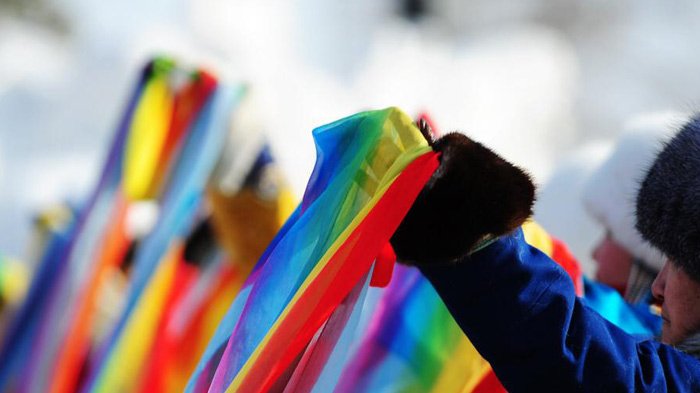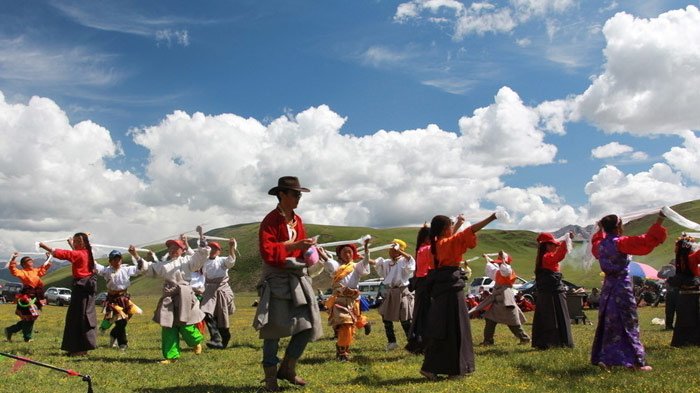
Khatag, an Auspicious Symbol in Tibetan Culture
Khatag is a traditional ceremonial scarf used in Tibet and Mongolia. Offering of khatag is a well known Tibetan culture in greetings. Khatags are often offered in Tibetan Buddhism to Buddhist images or statues, holy sites, lamas and in certain rituals. It represents the highest respect to the recipient.
Khatag Colors
Tibetan people worships white color, believing it symbolizes purity, auspiciousness, sincerity, kindness, justness and prosperity. Thus, the Tibetan khatags are usually white symbolizing the pure heart of the giver, though it is quite common to find yellow gold khatags as well.
 Five-colored Khatag
Five-colored Khatag
However, there is a special kind of khatag with five colors on: blue, white, yellow, green and red, respectively indicating sky, cloud, land, river and the God in charge of Buddha dharma. Five-colored khatag is very valued gift which can be given to the Buddha statues or intimate relatives. According to the Buddhism teachings, five-colored khatag is the clothes of Buddha. Therefore, five-colored khatag can only be presented in some special occasions.
Material of Khatag
Khatag is usually made of silk and it is loosely weaved. Khatag is a Tibetan word meaning silks in Tibetan language.
Presenting Khatags in Tibet
Presenting khatag is very popular culture in Tibet. People offer khatag when they visit parents, worship the Buddha, see somebody off, welcome someone home, and so on. While offering the khatag the presenter makes a little bow and the receiver accepts it with both hands held in front of them and immediately puts it on around his neck and wears it.
 Presenting Khatags for guests prevails on Qinghai-Tibet Plateau.
Presenting Khatags for guests prevails on Qinghai-Tibet Plateau.
However, when presenting khatag to seniors, the two arms should be raised up above the head. When presenting a khatag to people of the same age or younger, the presenter can tie the khatag directly to their necks. It is remarkable that some Tibetans even take a khatag with them when they go out in case that they meet friends or relatives; and some Tibetans even seal khatag in letters so that they can send their very best wishes. This is one of the most popular customs in Tibet where all of the people follow it interestingly.

With exceptional passion and outstanding leadership, Mrs. Catherine has dedicated herself to Tibet inbound tourism and China tour for 15 years. As one of the handful females who see great potential of Chinese inbound tourism, Catherine has made great contribution to promoting Tibet tourism and enhancing the employment of Tibetans and prosperity of local Tibetan community.
Over the years, she travelled overseas with Tibet Tourism Bureau many times to promote Tibet tourism. Currently, Catherine works as the marketing director of Tibet Vista, an opinion leader behind the whole team of Tibet Vista.


.jpg)




0 Comment ON "Khatag, an Auspicious Symbol in Tibetan Culture"